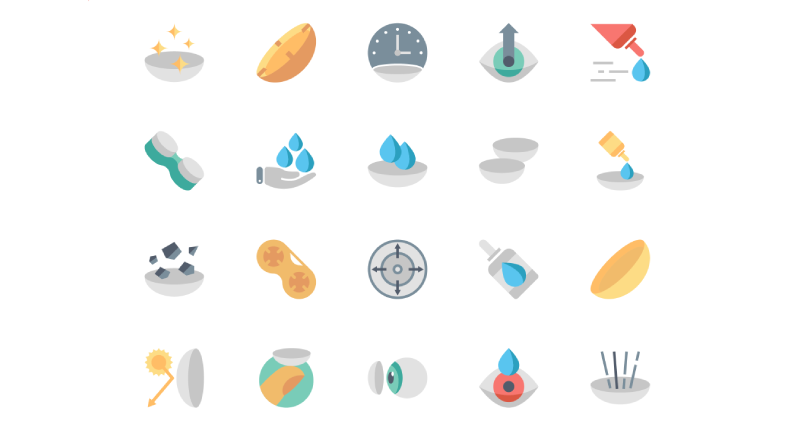Contact Lenses: Types, Advantages, and Uses
Contact lenses, also known as “contacts,” are thin lenses placed directly on the eye’s surface to correct vision problems like myopia, hyperopia, astigmatism, and more. While often chosen for aesthetic reasons, contact lenses offer several advantages, including:
– Increased field of vision
– Unaffected by moisture or perspiration
– Correction of conditions like keratoconus and aniseikonia
Types of Contact Lenses
Contact lenses are categorized based on three features:
1. Material: What they’re made of
2. Duration of Use: How long they can be worn
3. Design and Purpose: What they’re designed to correct or enhance
Materials Used
Contact lenses are made from various materials, including:
– Hydrogels: Soft, gel-like plastics used for soft lenses
– Silicon Hydrogel Lenses: Advanced soft lenses allowing more oxygen to reach the eye
– Gas Permeable Lenses: Rigid lenses that don’t bend to the eye’s curves, useful for correcting astigmatism
– Hybrid Contact Lenses: Combining rigid gas permeable material with soft hydrogel or silicon hydrogel
– PMMA Lenses: Older, plastic lenses that don’t allow oxygen to reach the eye
Duration of Use
Contact lenses must be replaced regularly to prevent deposits and contamination:
– Daily Disposable Lenses: Discarded after a single day’s wear
– Two-Week or Monthly Disposable Lenses: Replaced according to the manufacturer’s instructions
– Reusable Lenses: Can be used for up to six months or longer with proper care
Designs and Purposes
Contact lenses are designed for various purposes:
– Spherical Contact Lenses: Correct myopia and hyperopia
– Toric Soft Contact Lenses: Correct astigmatism, myopia, and hyperopia
– Multifocal Lenses: Correct presbyopia, myopia, and hyperopia
– Cosmetic Contact Lenses: Change eye color (available only by prescription)
– Prosthetic Use: Used for prosthetic eyes or to correct corneal irregularities
– UV-Inhibition: Block UV radiation
– Scleral Lenses: Correct corneal irregularities

